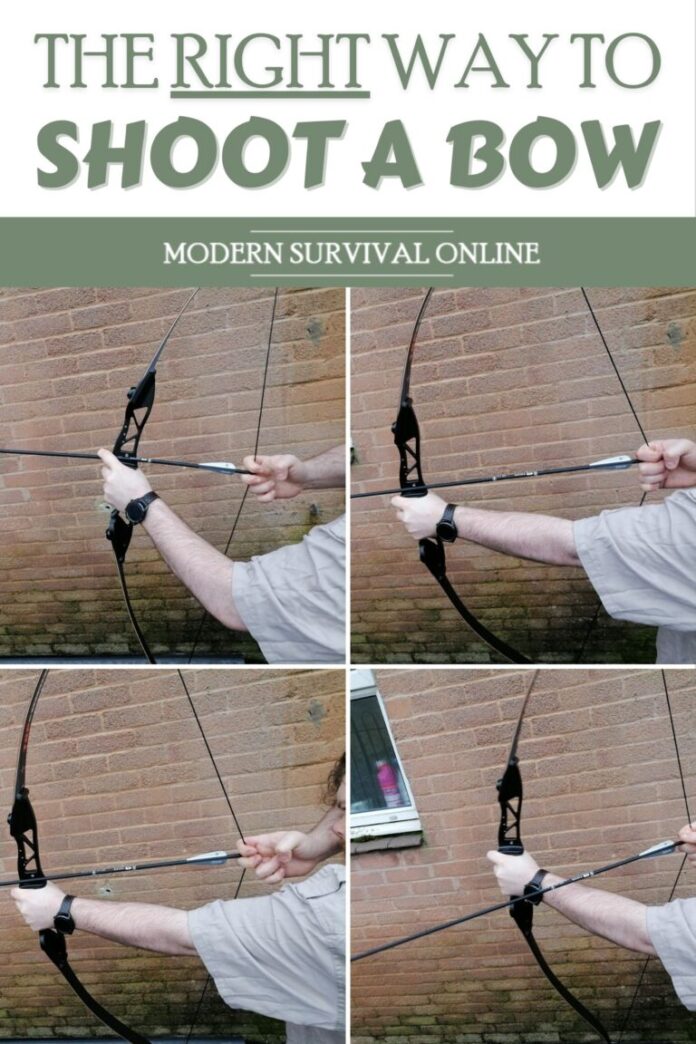Humans have had bows for millions of years, before that the ranged arrow was loosed from an atl-atl, which still exists today.
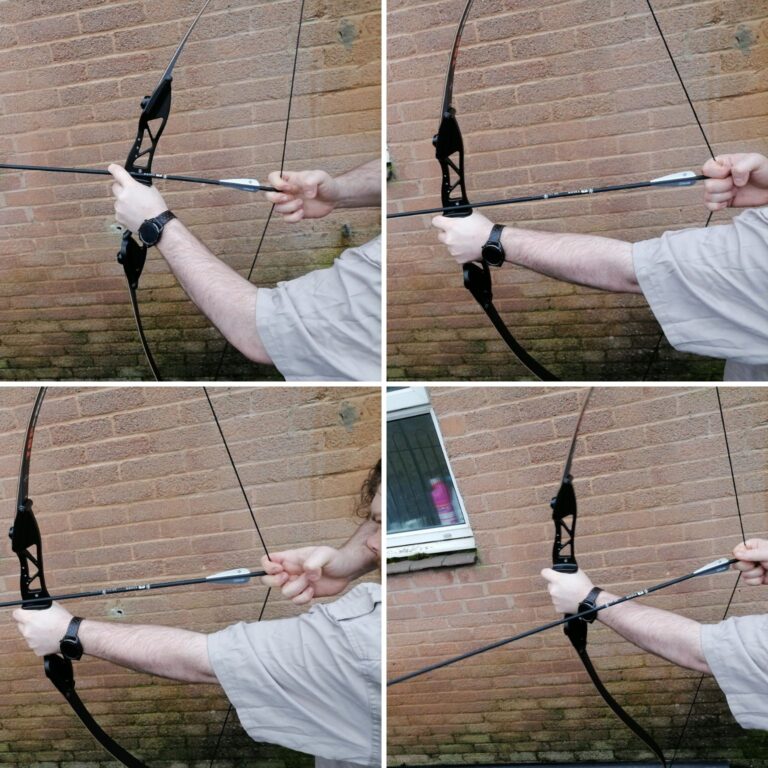
The invention of the bow changed hunting and over the years changed warfare.
The English used longbows to dominate warfare for hundreds of years, as the bow could be nocked, drawn and loosed at hundreds of arrows a minute creating a rain of arrows that rained down on the charging enemy to reduce their ranks.
Today, arrows are still a go-to for hunting as they are more silent than guns and you can learn to make arrows.
First-time archers may get anxiety when shooting a bow and cause the aim to be off, the same can happen with experienced shooters.
What is happening is your brain refuses to accept the arrow or pins are on the target.
You simply pick up your bow and an arrow, aim and draw; that’s it. Train your brain to recognize that the arrow is on target for as long as you need.
Remember to breathe as you draw and relax…
Your shooting stance would have your body sideways with your feet shoulder-width apart for a strong and steady stance. This allows you to have a more effective aim.
A narrow stance is never a good thing, no matter what you’re doing.
You need to learn how to recognize the bow’s health. Do the bow limbs look warped or cracked?
Over time limbs will begin to lose strength and begin to crack, and could will cause an accident if they snap when drawn.
Some cracks will be visible and felt when lightly felt with your fingers. If you think your bow has a crack it is better to buy a new set of limbs than take a chance as breaking bow limbs with cracks could cause an injury.
Does the Bowstring Look Frayed or Worn?
The bowstring is lots of fibers tied together with a wrap in the middle for the arrow notch. Over time, bowstrings will wear out through use.
If the bowstring is not replaced it will cause an accident.
Do the Bowstring Loops Look Worn or Frayed?
The loops are the connection to the bow, if the wrap holding the loops together begins to fray or the loop itself looks worn, just replace it.
Yes, bowstring replacement can be a frustrating time for some archers, but the more you do it the better you understand.
What about your compound bow cams? Do they still look in working order?
Check for cracks and stress marks on the cams.
Does the Riser Have Cracks?
Risers take a lot of stress, they are built to take it but will falter over time with age. If it has cracks, best to get new ones.
Do the Flights or Fletchings and Shaft Look Straight and True?
Arrow flights are an essential part of the arrow, if they are damaged or some are missing then the arrow is not usable and should be replaced.
Does the Arrow Shaft Look Straight and True?
The arrow shaft does wobble in the air when loosed, however, the arrow should be straight, and the nock and tip should be inline.
If they are not inline then the arrow will be unpredictable in flight.
A good archer ensures their equipment is in working order before use so they do not snap and cause injuries, they also know that the bow is set to their needed draw weight as if it is not there could be an injury.
A good archer gives their fellow archers about three feet to their left and right for a good experience.
A good archer will make sure no one is on the range in front of them before nocking an arrow and ensure this before losing any arrows downrange.
If you’re using your bow to hunt wear bright colors, orange is usually recommended, never make animal calls and alert other hunters you are there, you need to make sure that hunters know it is a human rather than an animal.
Make sure you can see in all directions and have clearly identified your target before losing your arrow.
Know the range of your bow before you use your bow.
If hunting and just injured the prey you have to wait an hour before following the trail, the wait can be longer, up to six hours, if you’ve identified a shot outside of vital organs and as a hunter you kill it you recover it.
- Nock: The means to attach the arrow to the bowstring via the notch on the arrow past the flights.
- Flights or Fletchins: The multicolored curved pieces that on modern arrows replace shaped feathers.
- Arrow Shaft: This is the body of the arrow that fletchings, heads and nocks are attached to.
- Arrowhead: is the part of the arrow that enters the targets, traditional arrows can have either sharpened wood points or broadheads, other heads are available for different purposes.
- Draw: To pull back the bowstring to your chin and create power for the arrow to fly.
- Loose: Means to let go of the bowstring to release that energy to send the arrow where you’ve aimed it.
- Arrow Rest: Usually part of a modern bow, a shelf sure into the Riser.
- Riser: The body of the bow to which you attach limbs to.
- Limbs: The slightly curved pair of wood or laminated arms to attach the bowstring to.
- Bow Arm: this is your less dominant arm, right-handers have a left bow arm, vice versa for southpaws. Ambidextrous can feel free to pick left or right-handed bow.
Step One: Understand Your Target.
See it and keep your eyes on it.
Step Two: Ensure the Arrow is Nocked.
This is easy enough: just attach the arrow to the bowstring, and keep it on the arrow rest (if you have one):
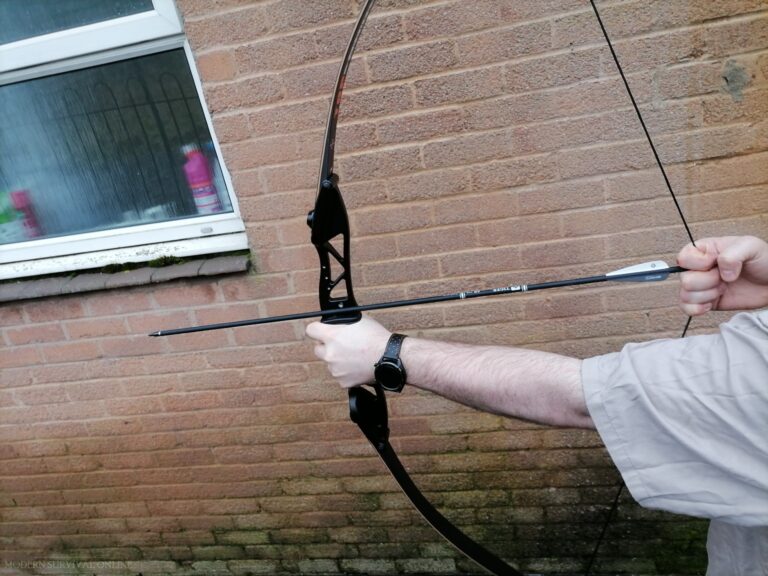
Some archers like to use their bow hand index to help keep the arrow on the rest:
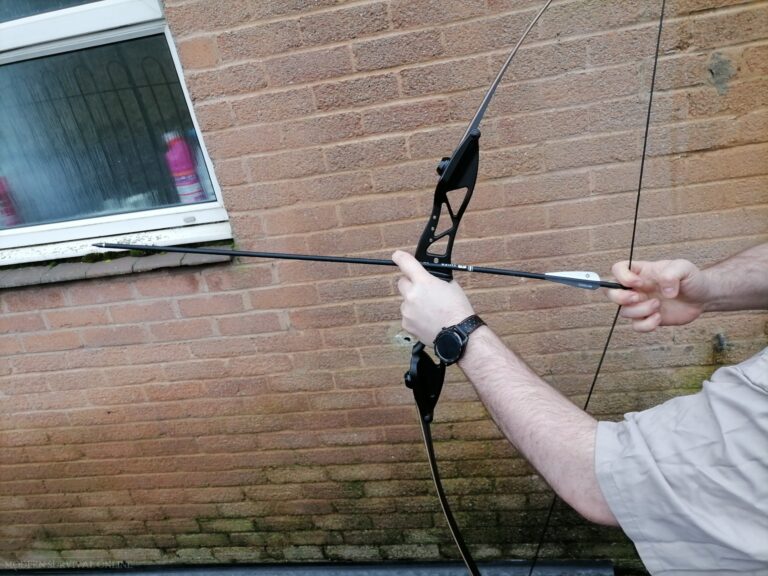
Step Three: Draw the Bowstring.
Bring it to your chin and aim carefully at your target. There are two draw styles:
The first is the one where the riser is lifted to help draw the bowstring, and aimed.

The other is riser and arrow in the general direction of your target, and then drawn and aimed.

Step Four: Aim the Arrow.
The tip of the arrow should be pointing at the target. Focus on just aiming and preparing to shoot. Your bow arm should be relaxed enough to keep the riser raised.
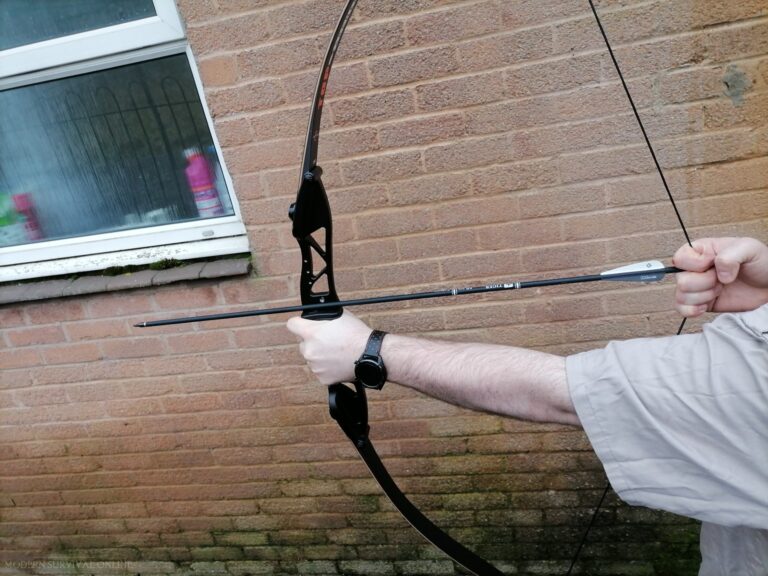
Step Five: Release the Bowstring, and Watch the Arrow Fly and Hit Your Target.
When I was preparing to nock the arrow, the shaft fell to the side. It’s not an issue, just use your bowstring fingers to tilt it back to level or onto the arrow rest.
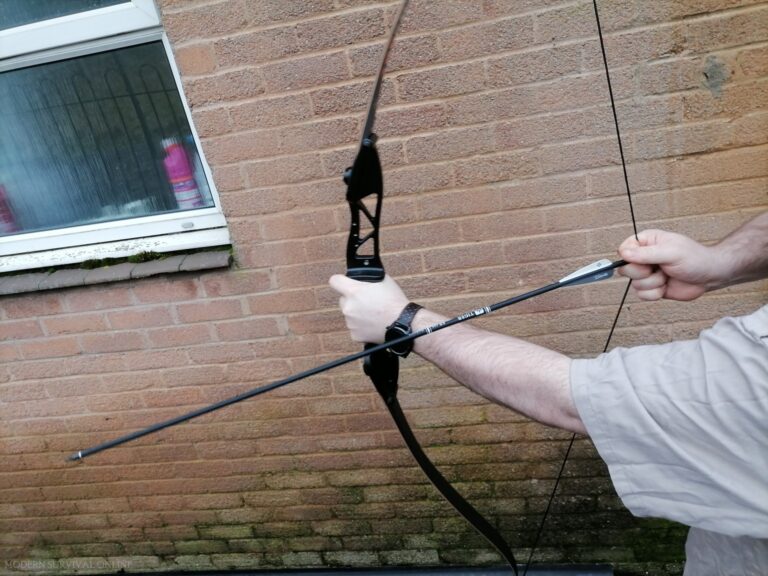
That is it. You’ve learned to shoot a bow and now you need to pick your bow if you do not have one, which we covered in a previous article and shoot your bow in a safe environment to hone your new skill.
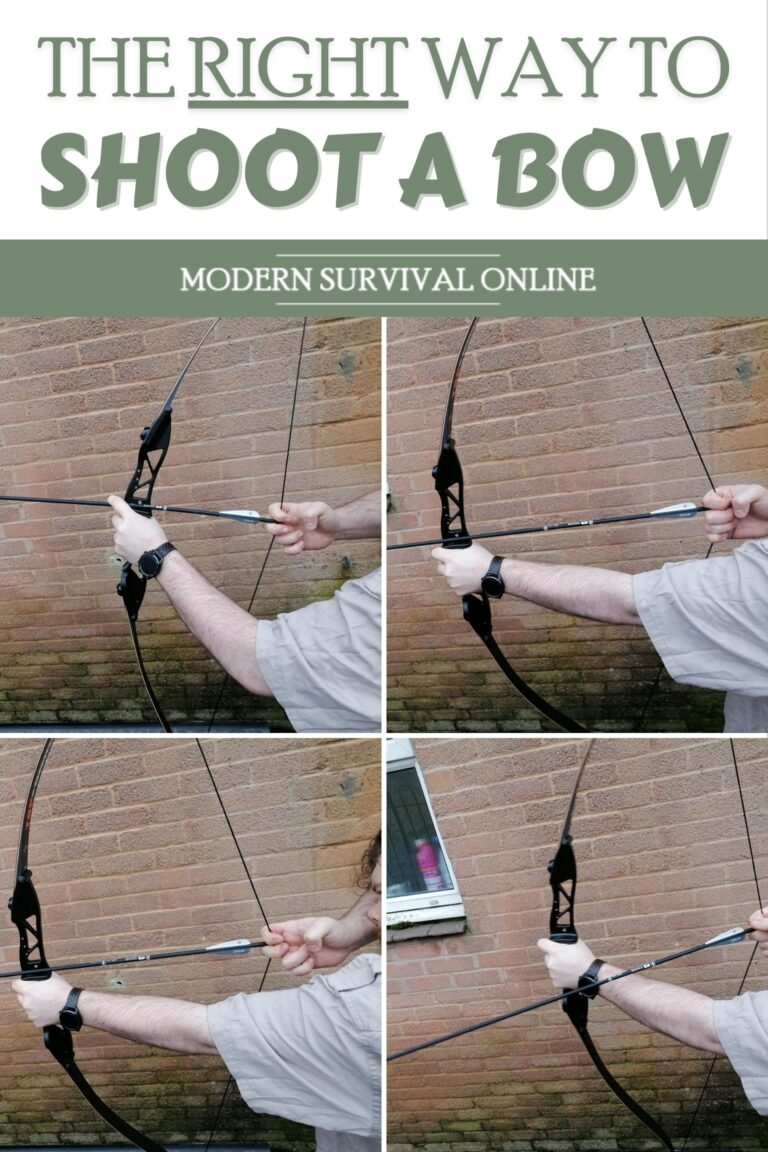
 Like what you read?
Like what you read?
Then you’re gonna love my free PDF, 20 common survival items, 20 uncommon survival uses for each. That’s 400 total uses for these dirt-cheap little items!
Just enter your primary e-mail below to get your link:
We will not spam you.


